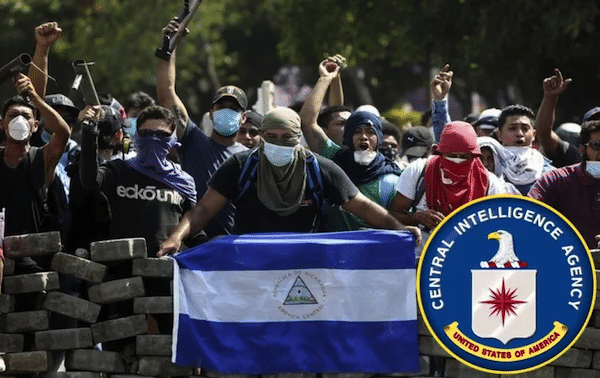While the United States pays little regard to the human rights of many of its own citizens, it manifests intense interest in those of countries that it regards as its enemies.
Nicaragua, designated by both Trump and Biden as a “strategic threat,” is seen as one of those enemies. Of the countries selected for their own annual human rights assessment by the U.S. State Department, Nicaragua merited special attention in 2022, with a 43-page report compared with, for example, only a 36-page analysis of neighboring El Salvador, where 66,000 people have been subject to mass arrests in the past year. This is part of a highly selective approach in which human rights violations by U.S. allies are downplayed or ignored.
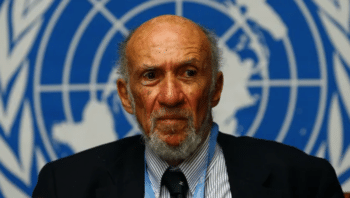
Richard Falk [Source: foxnews.com]
This was evident again in March when the UN Human Rights Council released a new report by a “group of human rights experts on Nicaragua.”
The report claimed that President Daniel Ortega’s government had “executed” 40 people, disregarding the context of violent opposition attacks using firearms. The report also claimed that the government ordered hospitals not to treat wounded demonstrators, when the then health minister had made clear that anyone injured should receive treatment. It goes on to detail a range of other alleged government human rights abuses, including torture, where the evidence is contested.

Jan-Michael Simon [Source: csi.mpg.de]
Given that the group had not even visited the country, this was not only absurd but grossly irresponsible. Yet it enabled The New York Times, never slow to criticize the Sandinista government, to come up with the headline “Nicaragua Nazis: Stunned researchers cite Hitler’s Germany.”
However, it is the damaging content of the report itself that has led the Nicaragua Solidarity Coalition to launch a petition demanding that it be with withdrawn, already co-signed by human rights experts Alfred de Zayas and Professor Falk.
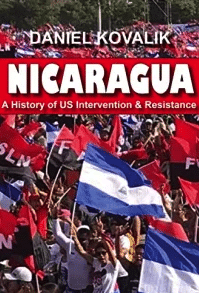
[Source: amazon.com]
It is extraordinary, then, that the report focuses almost entirely on the human rights of the perpetrators of what became a violent coup attempt, rather than on the rights of the huge numbers of ordinary Nicaraguans who suffered the consequences of their violence.
It is rather as if the experts had produced a report on, say, the attack on the U.S. Capitol on January 6, 2020, or the recent attack on Brazil’s presidential palace, and focused on the behavior of those repelling the attacks instead of on the injuries and mayhem caused by the attackers.
Because it took this stance, the experts’ 300-page report found no space for incidents such as the attempted murder of student leader Leonel Morales, who was kidnapped, shot and left for dead in a drainage ditch. Or the burning down of Radio Ya, whose 21 workers only narrowly escaped death.
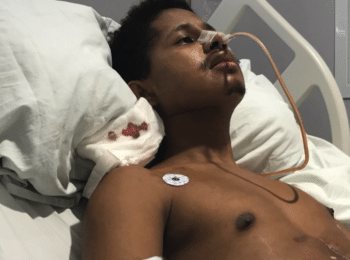
Leonel Morales lying in a hospital bed. [Source: photo courtesy of Max Blumenthal]
Or countless other crimes by “protesters” whom the report describes as largely peaceful, despite the gruesome scenes of torture and humiliation they filmed and then posted on social media. It contains not a single reference to any of these victims, let alone quoting from testimony (as it does in the cases of alleged victims of government violence).
The Nicaraguan government refused to take part in this exercise, having participated in similar ones in the past and found that its evidence was largely ignored. It has produced detailed evidence to show the steps it took to facilitate access by one set of international investigators, and how its cooperation was then abused.
As a result of past experiences, it denied permission for the group to visit the country, so the experts were reliant on evidence collected remotely. In these circumstances, the group might have been expected to balance carefully the sources and material it used.
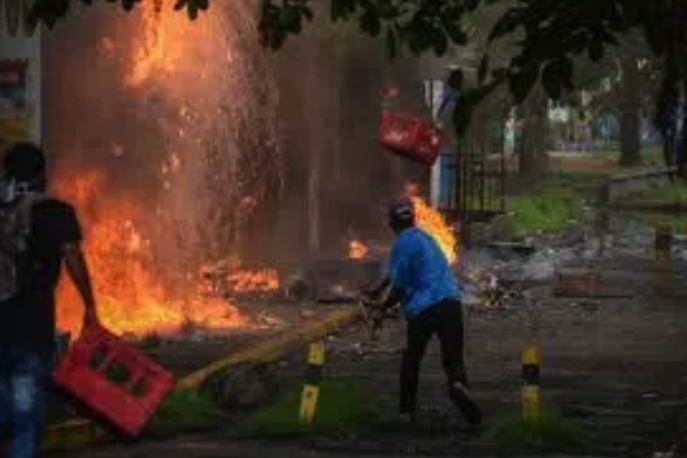
Burning down of Radio Ya. [Source: carlosagaton.blogspot.com]
The experts themselves are opaque about how their work was done. Requests for the names of the other team members assembling the report were refused, a lack of transparency which inevitably leads to the suspicion that its researchers might well have been drawn from opposition-supporting “human rights” groups or thinktanks.
The report’s bias is obvious from the fact that it makes no reference at all to independent examinations of previous human rights reports, which have shown them to be very unbalanced and having key omissions.
For example, I was part of a group who prepared the 2019 report Dismissing the Truth, which identified dozens of inaccuracies and omissions in a report on Nicaragua by Amnesty International.
I also helped compile an open letter from the Alliance for Global Justice to the Inter-American Commission on Human Rights, about the errors in a previous “expert” report that it published.
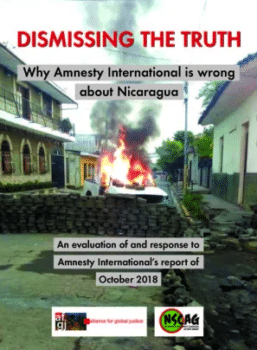
[Source: twoworlds.me]
How does a report focused on events five years ago pretend to justify new sanctions on the Nicaraguan government?—by claiming that the government has been engaged “since April 2018 and up to the time of writing this report… [in] a widespread and systematic attack… against a part of the Nicaraguan population.”
In making this assertion, the experts not only discount evidence of crimes by those arrested since 2018, but also ignore or downplay the many acts of clemency that took place, culminating in a general, conditional amnesty in 2019 that covered even the organizers of fatal attacks on police stations. The strong implication is that abuses such as “extrajudicial killings” which it alleges – on highly questionable grounds—occurred in 2018, still take place now in a country which is entirely at peace.
The fundamental problem is that the expert group pretends that the opposition forces in 2018 were either unarmed or had only homemade weapons. It said that “acts of violence (were) perpetrated by some demonstrators in the context of the protests, including stone throwing, the use of homemade weapons—mainly ‘mortars’, and some ‘contact bombs’ and Molotov bombs.”
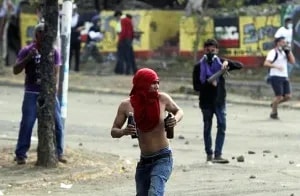
Nicaraguan protester wielding Molotov cocktails in 2018 riots in Nicaragua that, with U.S. backing, aimed to overthrow the left-wing Sandinista government. [Source: lavenguardia.com]
Given that almost all these deaths and injuries were the result of firearm injuries, there is a very obvious disparity between the group’s assessment of the behavior of the opposition groups and what actually happened. If they had also taken into account the widespread kidnappings, torture, arson attacks, robberies and other crimes, they might have come closer to producing a report which reflected the real experience of Nicaraguans in 2018.
Instead, the UN report is clearly intended to be a whitewash of the violence which (as Kovalik says) brought the country “to the verge of civil war,” just as so-called “human rights” bodies were used to whitewash the violence of the “Contras” in the U.S.-directed war of the 1980s. The opposition explicitly aimed to overthrow the Nicaraguan government: at the start of the violence and during the national dialogue that began in May 2018, opposition activists and their leaders openly stated that their objective was the removal of President Daniel Ortega.
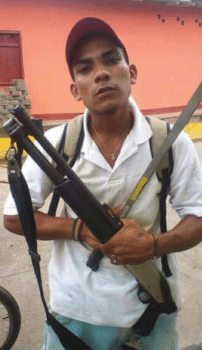
Anti-Ortega demonstrator brandishing gun. [Source: photo courtesy of Nan McCurdy]
Indeed, not failing to step up to the task, the group explicitly calls for additional sanctions in one of its recommendations. In doing so, it ignores the UN Human Rights Council’s own assessments of sanctions issued without its authority (known as “unilateral coercive measures”), which conclude that their legality is highly questionable.
Given that the “experts” who wrote this latest report are international lawyers, this is remarkably unprofessional. But it is even more extraordinary that the United Nations could publish such an unbalanced report attacking one of its own member countries, promoted in such a sensational manner. It could be tailor-made to give Washington the go-ahead to continue with the illegal measures against Nicaragua that it has already taken, and which it might now decide to strengthen still further.
John Perry is based in Masaya, Nicaragua and writes for the Council on Hemispheric Affairs, London Review of Books, FAIR and elsewhere.

